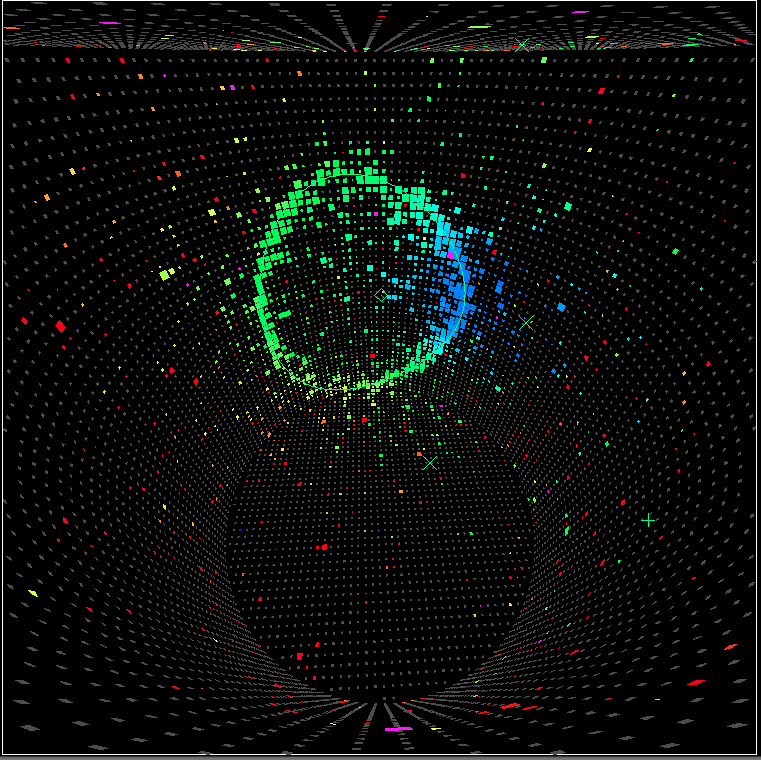UBC Physicists Catch Neutrinos “In the Act”
(Vancouver, BC) Today at the prestigious European Physical Society meeting in Stockholm, Sweden, a new breakthrough in our understanding of neutrinos, nature’s most elusive particle, was announced. The T2K collaboration, which consists of scientists from Canada, Japan, and nine other nations, confirmed definitive observation of a new type of neutrino oscillation, in which muon neutrinos transform to electron neutrinos. It has been known that neutrinos transform from one kind into another, but this marks the first time a unique flavor of neutrino has explicitly been identified from a beam initially consisting of a different type of neutrinos.
Scott Oser, UBC professor of physics and astronomy and spokesperson for the Canadian team known as T2K-Canada, commented, “Canada and UBC have been a major player in neutrino research since the success of the Sudbury Neutrino Observatory (SNO). T2K was the logical next step after SNO in our quest to understand neutrino oscillations, and Canada was in fact the first international partner to join T2K. These new results are the culmination of a decade of work, and open the door to future studies of how both neutrinos and anti-neutrinos oscillate.”
In the T2K experiment in Japan, a beam of muon neutrinos is produced in the Japan Proton Accelerator Research Complex, called J-PARC, located in Tokai, Ibaraki prefecture, on Japan’s east coast. The neutrino beam is monitored by a “near” detector complex (much of which was built in Canada) 280 meters away, and aimed at the gigantic Super-Kamiokande underground “far” detector in Kamioka, near the west coast of Japan, 295 km (185 miles) away. An analysis of data from Super-Kamiokande associated with the neutrinos from J-PARC reveals that there are more electron neutrinos (a total of 28 events) than would be expected (4.6 events) without this new process.
The T2K team at UBC consists of Christopher Hearty, Scott Oser, Hirohisa Tanaka, Stanley Yen (faculty), Yevgeniy Petrov (postdoctoral fellow), Sophie Berkman, Jiae Kim, Mark McCarthy, Christine Nielsen, Shimpei Tobayama (graduate students). The UBC group contributed to key elements of the near detector for T2K where the properties of the neutrino are measured before the onset of the neutrino oscillation effects. Dr. Petrov, along with Ms. Kim, Mr. McCarthy and Ms. Nielsen, performed key parts of the analysis of the near detector data under the leadership of Dr. Oser, who co-convenes the near detector group. Ms. Berkman and Mr. Tobayama developed a new algorithm for Super-Kamiokande to identify the electron neutrinos arising from neutrino oscillations with Dr. Tanaka, who co-convenes the far-detector analysis group, and Dr. Michael Wilking at TRIUMF. In addition to the current students, numerous UBC undergraduate and graduate students have contributed in the past to the construction of the near detector and the analysis of data from T2K.
In 2011, the collaboration announced the first hints of this process; now with 4.5 times more data this transformation is firmly established. The probability that random statistical fluctuations alone would produce the observed excess of electron neutrinos is less than one in a trillion.
Neutrino oscillation is a manifestation of a long-range quantum mechanical interference. Observation of this new type of neutrino oscillation leads the way to new studies of charge-parity (CP) violation which provides a distinction between matter and antimatter. This phenomenon has only been observed in quarks (for which Nobel prizes were awarded in 1980 and 2008). CP violation in neutrinos in the very early universe may be the reason that the observable universe today is dominated by matter with no significant antimatter, which is one of the most profound mysteries in science. Now with T2K firmly establishing this form of neutrino oscillation that is sensitive to CP violation, a search for CP violation in neutrinos becomes a major scientific quest in the coming years, and T2K will lead the way. The T2K experiment expects to collect 10 times more data in the near future, including data with antineutrinos for studies of CP violation in neutrinos.
“We’ve been fortunate to have exceptionally talented postdocs and students join us on T2K at UBC”, said Tanaka. “Together with strong support from NSERC, CFI and BCKDF, along with UBC, TRIUMF and ComputeCanada, we’ve managed to make a big contribution to this international effort. This is just the beginning of the story and we want to continue to be a part of the action as more mysteries of the neutrino are uncovered.”
For more information and media resources, please see http://triumf.ca/t2k. The collaboration also maintains a public website at: http://t2k-experiment.org/